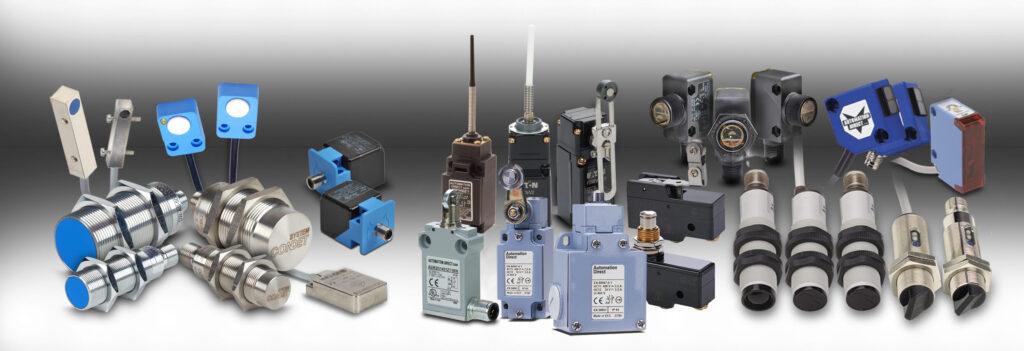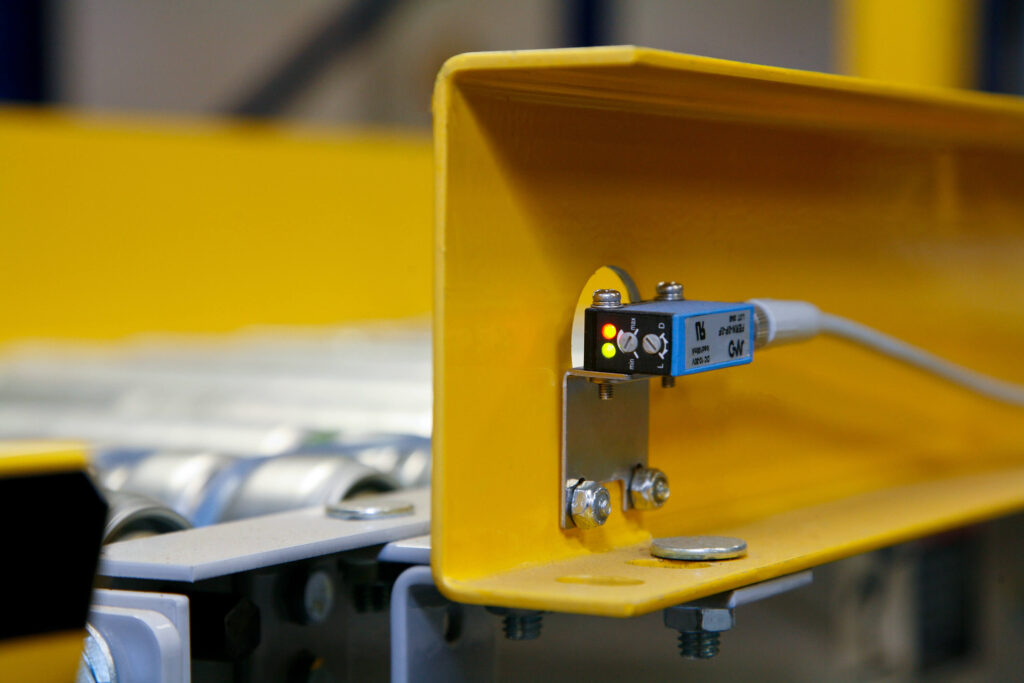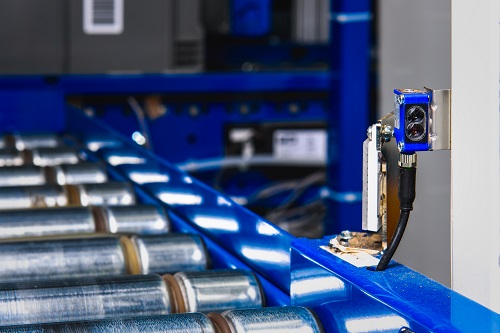By considering these application characteristics, specifiers can identify the best industrial sensor candidates for their applications.
Discrete object detection refers to methods used to sense the presence—or the absence—of a target material or product, resulting in an “on” or an “off” signal. There are many options for these types of sensors on the market, so Bill Sonnenthal, technical marketing engineer for AutomationDirect, wrote an article for the August 2023 issue of InTech titled Discrete Sensor Selection Basics, to help guide users. Here’s a summary, click on the link above for the full text.
Discrete Detection Basics
There are many styles of discrete sensors, such as photoelectric, electromechanical, proximity (prox), and more. Proven field experience is a top guide for sensor selection, but even in cases where “it was always done that way,” it is important to periodically review available technologies to find the best price/performance ratio for each application.

Specifiers must consider the following application aspects when selecting sensor technology:
- Target: Is it a product (liquid, powder, pellet, etc.) or an object (metal, plastic, cardboard, etc.)
- Distance: Will the sensor physically make contact with the target, or be at a non-contact close distance, or a farther distance.
- Environment: For the sensor housing and the wiring—whether hardwired or quick-disconnect (QD) connectors—IP65 and equivalent ratings are common and useful for many applications when dust-tight and water-resistant protection is important. Other ratings are available in environments with more challenging temperature and chemical exposure.
- Form factor: Typical sensors are rectangular or barrel-shaped. Larger sensors generally have greater sensitivity and range, but smaller sensors are often needed for constrained spaces.
- Specialty requirements: General-purpose sensors work well in many cases, but specialized versions are available as well, such as weld slag resistance, weld field immunity, high temperature ranges, high pressure suitable for hydraulics, and metal chip immunity (to prevent false signals due to metal debris commonly generated in machining applications).

Electrical considerations include:
- Electromechanical or solid-state contacts: Solid-state outputs have longer lifetimes and are smaller, faster, and quieter than mechanical contacts, but typically don’t carry as much current.
- Voltage and signal type: 120 VAC two-wire sensing devices are still available, but many industries have largely moved to 24 VDC three-wire sensors because they are safer and easier to work with. Three-wire sensors can be PNP/sourcing, NPN/sinking, or support both types, so designers must ensure compatibility with the automation application.
- Normally-open (NO) or normally-closed (NC), depending on application logic and fail-safe requirements.
- IO-Link digital bus: Some newer sensors provide conventional hardwired functionality, but they can also offer high-speed digital communications for expanded sensor parameters and diagnostic data.
Sensor Styles
Some of the most common sensor styles and usages are:

- Limit switches: Mechanical devices providing economical sensing of equipment and material.
- Magnetic prox: Can sense magnetic targets at relatively long ranges of 60mm or more, even through non-magnetic barriers.
- Inductive prox: Good for sensing ferrous metals and other metals.
- Capacitive prox: Good for sensing target products, even through insulating materials.
- Ultrasonic sensors: Transmit sound waves and receive echoes bounced off a target; not affected by color or transparency so ideal for clear objects and liquid levels.
- Photoelectric sensors: Use visible, infrared, or laser light to detect targets over relatively long distances; useful for detecting conveyed goods like boxes; several styles exist for various geometries.
Finding the Right Discrete Sensor
By investigating the application details, designers can quickly find the best sensor for their application.

Selecting the right discrete sensor for any given application requires specifiers to consider a number of factors, and perhaps even make some tradeoffs. There is no single best technology, and sometimes there are multiple types of sensors that may serve well in a given application.
AutomationDirect offers a wide range of discrete sensors, and the support team is ready to help designers find the right products to automate their factories and equipment.

